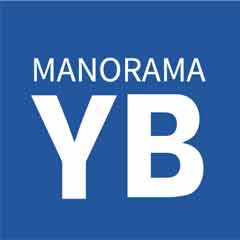Jal Jeevan Mission covers two-thirds of India’s rural households

The mission aims to provide tap water supply to households by 2024
The mission aims to provide tap water supply to households by 2024
The mission aims to provide tap water supply to households by 2024
About two-thirds of the rural households in India have a piped water connection, according to the dashboard of Jal Jeevan Mission. The dashboard shows that 12.86 crore rural households, or 66.85 per cent of the total number of such households, now have a functional water tap connection.
Already six states — Goa, Telangana, Haryana, Gujarat, Punjab and Himachal Pradesh, and three Union Territories — Puducherry, Dadra and Nagar Haveli & Daman and Diu and Andaman and Nicobar Islands, have reported reported ‘Har Ghar Jal’, which means every household has access to clean drinking water through tap.
What is Jal Jeevan Mission?
• The central government assistance to states for rural water supply began in 1972 with the launch of Accelerated Rural Water Supply Programme. It was renamed as National Rural Drinking Water Programme (NRDWP) in 2009.
• The Modi government restructured NRDWP into Jal Jeevan Mission in August 2019.
• The Jal Jeevan Mission (JJM) was announced on August 15, 2019 to provide Functional Household Tap Connection (FHTC) to every rural home by 2024.
• In 2019, out of about 19.35 crore households in rural areas, about 3.23 crore (17 per cent) had tap water connections. Thus, 15.70 crore households were to be provided with tap water by 2024.
• In addition, functionality of all existing water supply systems and tap connections is also to be ensured. This means that drinking water sources have to be strengthened and grey water has to be treated and reused.
• Under JJM, every rural household is to be provided with a functional tap water connection and ‘no one is left out’, irrespective of their socio-economic conditions.
• It is about achieving long-term drinking water security in such a way as to avoid making emergency arrangements through deployment of tankers or trains, hand pump installation, etc in any village.
• Various states/UTs have also committed to achieve the goal of the Mission well before 2024.
How is it being implemented?
• The Mission forms part of one of the government’s biggest community infrastructure outlays with an amount of Rs 3.6 lakh crore giving a boost to manufacturing industry, creating job opportunities and extending support to lift the rural economy.
• In addition, an amount of Rs 26,940 crore was allocated to the states in 2021-22 as 15th Finance Commission tied grants for water and sanitation to rural local bodies and Panchayati Raj institutions.
• An amount of Rs 60,000 crore has been allocated to ‘Har Ghar Jal’ in Union Budget 2022-23 to provide tap water to 3.8 crore households.
• There is an assured funding of Rs 1,42,084 crore for the next five years — up to 2025-26.
• With JJM, focus is on ‘assured and regular water supply at household level’, which means water supply in adequate quantity (55 litres per person per day) of prescribed quality (as per Bureau of Indian Standards) on long-term and regular basis, which constitutes the very definition of the ‘functionality’ of taps or water supply systems.
• It is implemented in a decentralised manner following the ‘bottom-up’ approach, wherein the local village community plays a key role starting from planning to implementation and from management to operation & maintenance.
• Village Water & Sanitation Committees (VWSCs)/ Pani Samitis are being constituted and strengthened. So far, over 5.20 lakh VWSCs (Pani Samitis) have been constituted.
• States are giving priority to SC/ST majority populated villages, aspirational districts, villages in drought prone and desert areas and quality-affected habitations.
• Special focus is given to the districts affected with Japanese Encephalitis/ Acute Encephalitis Syndrome (JE-AES) which is one of the reasons behind infant mortality in the affected districts. Around 3.01 crore households are there in 61 JE/AES endemic districts of Assam, Bihar, Tamil Nadu, Uttar Pradesh and West Bengal.
• Water quality monitoring & surveillance activities are given top priority under the Jal Jeevan Mission. Five women in each village are being trained to test water samples of any kind of contamination by using field test kits (FTKs). The FTK helps to test water on nine parameters — pH, alkalinity, chloride, nitrate, total hardness, fluoride, iron, residual free chlorine and H2S. More than 17 lakh women have been trained so far to test water quality through FTKs.
• Jal Jeevan Mission leverages the use of technology to ensure transparency, accountability, proper utilisation of funds and service delivery. Every water supply asset created under Jal Jeevan Mission is geo-tagged. Hydro-geo morphological (HGM) maps are used in planning to identify drinking water sources and construct aquifer recharge structures. Household tap connections provided by JJM are linked with Aadhaar number of the head of the household and more importantly all financial transactions are undertaken through Public Finance Management System (PFMS).
• With the active participation of people, especially women, and rural communities working together, Jal Jeevan Mission has become a ‘Jan Andolan’.

